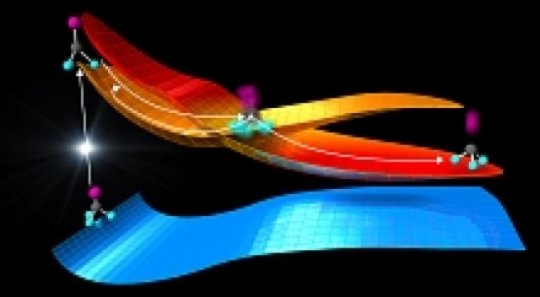A self-healing membrane that acts as a reverse filter, blocking small particles and letting large ones through, is the "straight out of science fiction" work of a team of Penn State mechanical engineers.
"Conventional filters, like those used to make...
The idea that light has momentum is not new, but the exact nature of how light interacts with matter has remained a mystery for close to 150 years. New research from UBC's Okanagan campus, recently published in Nature Communications,...
At Karlsruhe Institute of Technology (KIT), physicist Professor Thomas Schimmel and his team have developed a single-atom transistor, the world's smallest. This quantum electronics component switches electrical current by controlled repositioning of a single atom, now also in the...
The latest development in textiles and fibers is a kind of soft hardware that you can wear: cloth that has electronic devices built right into it.
Researchers at MIT have now embedded high speed optoelectronic semiconductor devices, including light-emitting diodes...
Relief may be on the horizon for anyone who has ever jumped around a room like a jack-in-the-box to get motion-sensing lights to turn back on, thanks to a new motion sensor based on metamaterials that is sensitive enough...
Roboticists are envisioning a future in which soft, animal-inspired robots could be safely deployed in difficult-to-access natural and human-made environments, such as in delicate surgical procedures in the human body, or in spaces too small and unpredictable to be...
When what we want as individuals clashes with what is best for the group, we have a social dilemma. How can we overcome these dilemmas, and encourage people to cooperate, even if they have reason not to? In a...
Transistors are tiny switches that form the bedrock of modern computing; billions of them route electrical signals around inside a smartphone, for instance.
Quantum computers will need analogous hardware to manipulate quantum information. But the design constraints for this new...
An extremely fast "electron camera" at the Department of Energy's SLAC National Accelerator Laboratory has produced the most detailed atomic movie of the decisive point where molecules hit by light can either stay intact or break apart. The results...
University of British Columbia researchers have found a cheap, sustainable way to build a solar cell using bacteria that convert light to energy.
Their cell generated a current stronger than any previously recorded from such a device, and worked as...
Diamonds are prized for their purity, but their flaws might hold the key to a new type of highly secure communications.
Princeton University researchers are using diamonds to help create a communication network that relies on a property of subatomic...

















